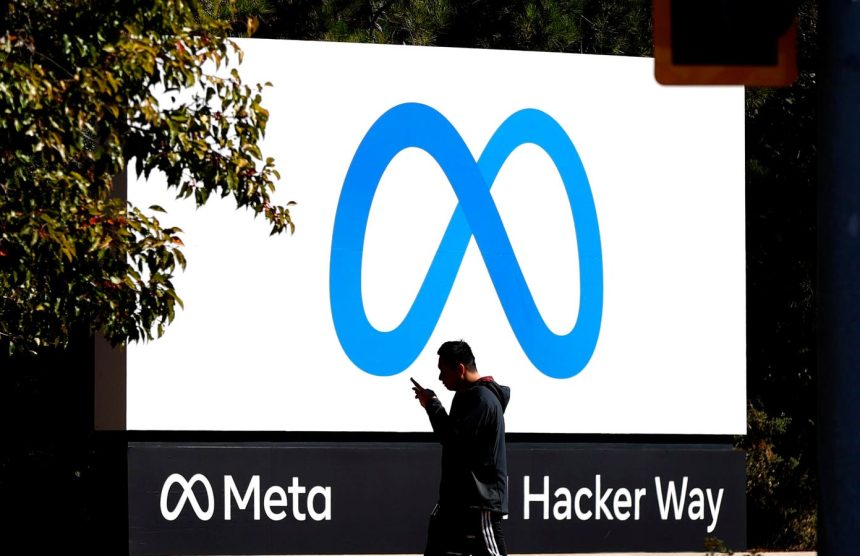In the past few years, advertisements across Meta platforms like Instagram and Facebook have increased dramatically. But that could be changing soon—at least in Europe. Meta announced that starting this month, it will be offering people living in the European Union, European Economic Area and Switzerland the chance to pay for a monthly subscription that eliminates the ads that commonly flood user feeds. In addition to scrolling sans advertisements, users in the ad-free subscription will scroll free of behavior tracking, alleviating privacy concerns that have plagued Facebook for years—at least for European users.
Indeed, according to Meta, the decision to offer ad-free subscription is about complying with changing European regulations. It will still earn the company cash, though—Meta is charging €9.99/month (Web) or €12.99/month (iOS and Android) to access the ad-free versions of the platforms. Meta says the subscription fee will initially cover all linked accounts in a user’s Account Center. However, the cost will bump an additional €6/month for each additional account starting March 1, 2024.
Meta Goes Ad-free: Why?
According to the company’s official statement, Meta believes in an ad-supported internet environment. It’s no secret why. Some 97 percent of Meta revenue comes from ads. In fact, it’s reported that ad revenue for Q2 2023 alone was $31.5 billion. At the same time, ad impressions increased by nearly 35 percent over 2022. It’s safe to say that Meta would still be focusing solely on free-with-ads subscriptions if it weren’t for mounting pressure and regulations in the European region. Because “consent” is an important part of sharing data, the Court of Justice of the European Union agreed that a paid-subscription model would serve as a valid form of consent for users. In other words, deciding not to pay for ad-free use means you consent to sharing data and seeing ads.
In short: offering an ad-free subscription helps Meta maneuver the stringent European regulations while still making a considerable amount of money from subscription fees. Morally questionable? Sure. But technically, a paid-model meets the requirements. Furthermore, is there a substantial audience that may part with hard earned dollars for what would be perceived as a better user experience? Of course, not seeing ads and not being part of the data used to crate them are another thing as well. Surely, the revenue per user for this model would have to be better than the revenue per user with ads.
Meta Goes Ad-free: A new trend?
Although the announcement might be a surprise to some, Meta is not the only social media platform to announce a potential ad-free user experience. For years, steaming services like Spotify have offered users interruption-free services. Just last month, Tik Tok also announced it would be testing a similar paid/no-ad subscription in Europe—although at $4.99, their subscription model is decidedly cheaper. X and Snapchat already offer subscription-based services, although they vary. X Premium tier subscribers see about 50 percent fewer ads while Premium+ tier users see non in the “For You” and “Following” timelines. Snapchat similarly offers an ad-free option, but it is limited to certain parts of the app (Story and Lens only). And, YouTube also jumped on the ad-free bandwagon with YouTube Premium—a service that allows users to skip the annoying ads for about $14/month.
What we can glean from this shift is two-fold: privacy regulations are making it increasingly difficult for companies like Meta and X to run ads—and collect user data—in the way they have been in the past. That’s a good thing. Many users have expressed frustration with the increasing number of ads and sponsored content on social, which can make it difficult to find the content users really want to see. Rather than a personal experience, it becomes a curated experience—an experience curated by social media platforms to ensure that users see ads most likely to appeal to them. What’s worse, the Federal Trade Commission announced an increase in the number of people complaining they lost money by purchasing items they saw in social media ads. Point being: the ads making money for Meta and other platforms aren’t necessarily vetted to ensure that they’re legit. In that sense, paying a few bucks a month for ad-free content may actually save users money in the long run—if in fact they were spending money they wouldn’t have went ahead and spent anyhow?
Meta Goes Ad-free: When can U.S. users benefit?
Thus far, no plans for an ad-free user experience have been announced for U.S. users. Still, the move toward subscription-based ad-free options does beg a few questions. For instance, how many fees and how many subscriptions are too many? For instance, Meta and X are both allowing for paid verified user status. Users on YouTube also have the option to pay for TV subscriptions. It’s possible users could pay for multiple subscriptions to the same app. The question remains: are they willing to? Moreover, would Meta want to offer this in a market where privacy is much less stringent and users are a target rich environment for ad data and ad revenue?
The situation seems to resemble the streaming sprawl that many are experiencing with apps like Netflix, Hulu, Apple+ and other services. In the beginning, streaming was marketed as an economical alternative to cable TV. Now, it’s become so splintered that many users are paying more for streaming than they ever did for cable. Subscription fatigue is real. In this case, what’s even more important is that users are being made to pay for companies not to capture their personal information—information that makes those companies money. At least for social media companies, it’s a brilliant model. They stand to make money, either way. Users on the other hand…has it really ever mattered?
Read the full article here









